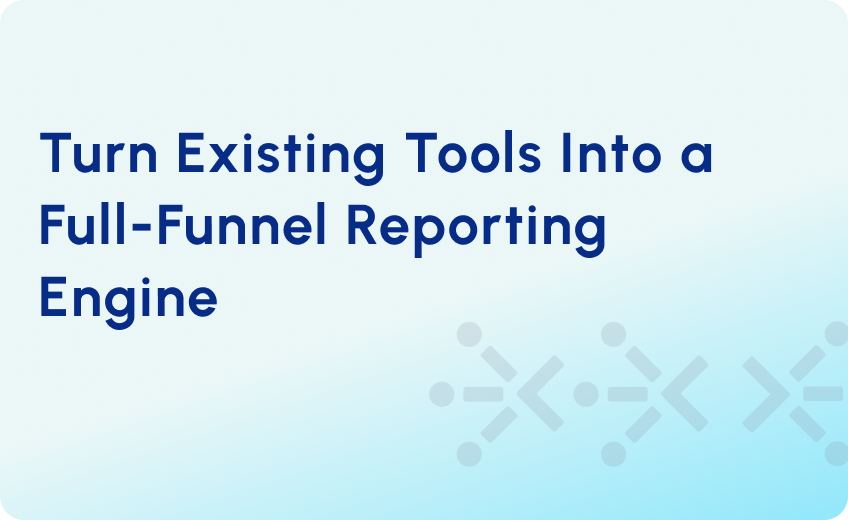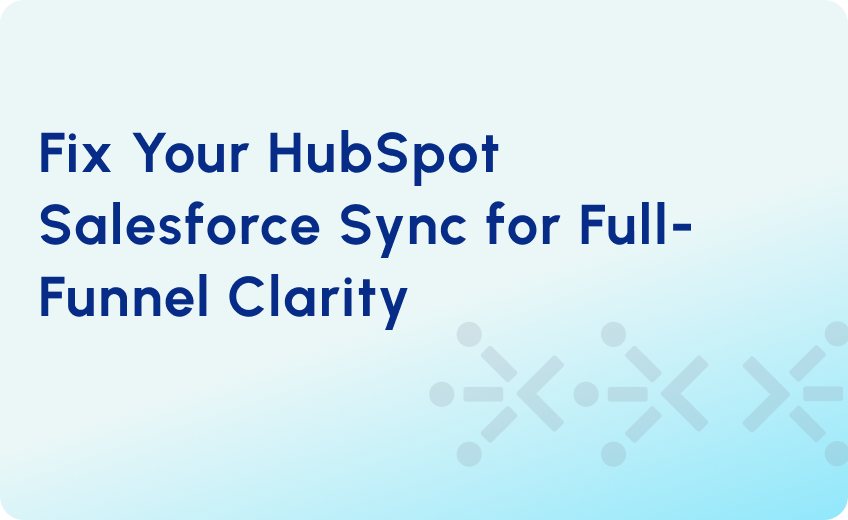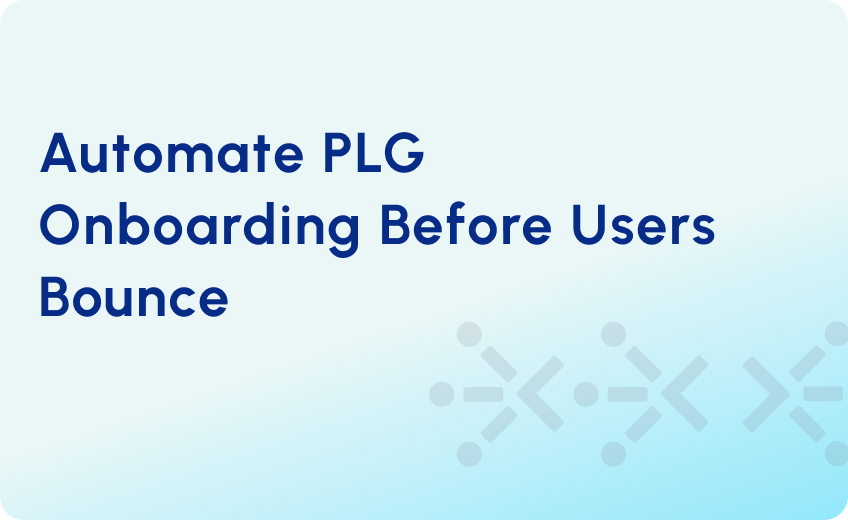
RevOps Governance: The Layer Most Organizations Overlook
Most revenue operations strategies emphasize lifecycle stages, handoffs, and SLAs—but without governance, these systems fall apart over time. However, when people think about RevOps governance, they often default to funnel metrics, SLA enforcement, and lead handoffs. But real governance goes far beyond that.
Governance is the operating system that ensures every aspect of your revenue engine, i.e., processes, platforms, people, and campaigns, runs as intended. It defines how campaigns are executed, how systems like Salesforce, Marketo, or HubSpot are maintained, how data stays clean, and how teams are trained to uphold standards.
Without it, strategies remain theoretical, living in slide decks instead of embedded in daily execution.
Done right, governance creates a scalable foundation for revenue growth: clear accountability, cleaner systems, tighter feedback loops, and a GTM engine that actually runs as intended.
What RevOps Governance Actually Means
RevOps governance isn’t about policing funnel stages or enforcing SLAs in isolation. It’s about creating a system-first framework that drives operational consistency across your entire GTM motion—from platforms and processes to people and performance.
The governance journey doesn’t start with behavior; it starts with systems. The tools your teams rely on daily, like Salesforce, Marketo, HubSpot, Outreach, need active oversight. Without predefined rules for how these tools are configured, used, and maintained, no amount of documentation or accountability can stick.
Governance in a modern RevOps environment includes these pillars:
1. System Governance (Where It Starts)
This is the foundation. Systems need guardrails: structured data models, field ownership, automation logic, campaign setup rules, and QA protocols. Governance ensures your tools aren’t just functional—they’re operationally aligned and enforceable.
- Ownership of field logic, sync rules, campaign taxonomies, and scoring models
- Change control processes for workflows and system updates
- Governance policies for campaign creation, attribution, and tagging
- Regular audits of system integrity, sync health, and usage gaps
2. Process Governance
Once systems are aligned, governance formalizes how work gets done. This includes lifecycle definitions, SLA policies, routing logic, escalation paths, and campaign workflows—everything that keeps your GTM execution repeatable and scalable.
- Defined operational workflows and SOPs
- SLA enforcement with automation and alerting
- RACI matrices to clarify process responsibilities
- Escalation and issue resolution pathways
3. Behavioral and Team Governance
Behavioral governance is about clarity, communication, and consistent reinforcement. Everyone should know how their day-to-day work connects to the broader GTM system.
- Cross-functional cadences (pipeline reviews, attribution reviews, SLA audits)
- Training on systems, campaign protocols, and lifecycle compliance
- Feedback loops to refine processes as the business evolves
- Onboarding protocols tied to system and process standards
4. Data Governance
Data governance keeps your lifecycle, routing, scoring, and attribution models from breaking. By data governance, we dont mean a one-time cleanup. It should be an ongoing system of rules, audits, and ownership that protects your revenue engine. This is how it looks in practice:
- Required field enforcement for scoring, routing, and attribution (e.g., UTM fields, lifecycle stages, lead source, contact roles)
- Regular audits of your Salesforce and Marketo/HubSpot sync health
- Ongoing deduplication and normalization (names, industries, job titles)
- Clear field ownership—who owns it, who updates it, and how it syncs
Common Misconceptions About RevOps Governance
RevOps governance is often misunderstood, either minimized as documentation or dismissed as bureaucratic overhead. In reality, it’s the mechanism that enables scale, consistency, and execution quality across your GTM engine. Here’s what it’s not:
| Myth | Reality |
| Governance = Red Tape and Bureaucracy | Governance creates clarity, automates enforcement, and minimizes operational risk—freeing teams to execute faster. |
| Governance Starts with Behavior | Governance begins with systems. Without rules for how platforms like Salesforce, Marketo, or HubSpot are configured and maintained, behavior alone won’t stick. |
| Tools Enable Governance | Tools need governance. They must be governed to ensure data quality, campaign consistency, and proper usage across teams. |
| It’s Just About SLAs and Lead Handoffs | Governance covers much more—campaign setup, attribution logic, scoring models, data stewardship, QA enforcement, and system change control. |
| It’s a One-Time Project | Governance is ongoing. As your teams, tools, and strategies evolve, so must the rules, responsibilities, and enforcement mechanisms. |
| It’s Only for Large Teams | Smaller teams benefit even more. Early governance builds muscle memory, standardizes processes, and prepares the org for scale. |
| RevOps Owns It Al | RevOps orchestrates governance, but ownership is distributed. Marketing owns campaign execution, Sales owns follow-up, and Ops owns platform integrity. |
| Dashboards = Governance | Dashboards are only visibility. Real governance includes operational controls, cadences, training, and escalation paths. |
| Documentation Is Enough | Documentation is the starting point. Without QA processes, enforcement, and cultural adoption, it’s just shelfware. |
Building Blocks of a RevOps Governance Framework
A governance framework must go beyond principles and actually define how GTM execution is monitored, enforced, and optimized. The following components form the operational foundation of effective RevOps governance:
1. Ownership by Processes and System
- Assign process-level accountability: For example: Marketing owns the “Lead to MQL” process; SDRs own “MQL to Meeting”; Sales owns “Opportunity to Closed Won.”
- Clarify system responsibilities: Document who manages what fields, workflows, and campaigns in Salesforce, Marketo, or HubSpot.
- Use a RACI matrix: Clearly define who is Responsible, Accountable, Consulted, and Informed across every stage and process.
2. Cross-Functional Review Cadences
- Weekly: Pipeline hygiene meetings led by Sales and RevOps to ensure deal data is current and compliant.
- Bi-weekly: MQL quality and lead conversion reviews between Marketing and SDRs.
- Monthly: Funnel performance reviews including campaign ROI, SLA compliance, and lifecycle stage analysis—bringing together all GTM stakeholders.
3. Governance Tools and Documentation
- Centralized documentation. One source of truth with lifecycle definitions, process flows, SLA rules, and system ownership.
- Shared dashboards. SLA breach rates, untouched MQLs, missing attribution fields—all visualized in one dashboard accessible to all GTM teams.
- Issue tracking. Maintain a log of recurring governance failures (e.g., missing UTM parameters, incorrect contact roles) to inform process or tech stack updates.
5. Training and Adoption
- Onboarding protocols: New hires should be trained on lifecycle stages, SLA expectations, and campaign execution standards to reduce confusion and inconsistency.
- Process refreshers: Regular enablement sessions reinforce updated workflows, scoring logic, routing rules, and reporting requirements.
- Knowledge gaps: Governance addresses team uncertainty—lack of clarity on what to do or whom to ask—by defining escalation paths and documentation access.
- Adoption monitoring: Track adherence to processes through system audit logs and validation rules. Use feedback loops to identify training needs and improve process clarity.
Governance in Action: An Example
Let’s walk through a typical lead-to-opportunity scenario with governance layered in at every step.
1. Form Submission
Problem: Incomplete fields (e.g., no company name, UTM data) or missing GDPR consent.
- Governance: Field validation rules ensure required inputs. Automated QA tools flag non-compliant forms daily. Missing GDPR consent blocks sync to downstream systems.
2. CRM Sync
Problem: HubSpot or Marketo fails to sync with Salesforce due to bad or incomplete data.
- Governance: Sync error reports are monitored regularly. Field mapping and ownership are documented. Alerts trigger when sync rates drop below threshold.
3. Lead Scoring & Routing
Problem: Incorrect scoring logic or routing leads to missed follow-ups or MQLs going cold.
- Governance: Scoring rules are version-controlled and aligned across systems. Routing flows are QA’d monthly. SLA alerts notify managers if follow-up doesn’t occur within 24 hours.
4. Campaign Execution
Problem: Emails sent with typos, broken layouts, or to the wrong segments.
- Governance: Campaign QA checklists and pre-send reviews are mandatory. Audience logic is validated by marketing ops. Broken assets trigger rollback workflows.
5. Ad Platform Sync
Problem: Leads from LinkedIn Ads or paid sources are missing in CRM.
- Governance: UTM and platform-level integration audits are scheduled. Attribution gaps are logged and reconciled in the next funnel review cycle.
How Governance Drives Better Outcomes
RevOps governance is all about creating consistent, measurable execution across every revenue function. When implemented effectively, governance delivers a tangible business impact:
- Faster Speed to Action: Governance ensures that critical follow-ups, handoffs, and opportunity creation happen on time and with the right context. By enforcing SLAs and process compliance, it reduces lag between buyer signals and GTM team response.
- Reduced Operational Friction: Governance eliminates ambiguity in handoffs by enforcing clear ownership and SLAs. Teams execute faster because responsibilities are defined, processes are standardized, and manual exceptions are minimized.
- Improved Data Quality: With governance in place, critical fields—lifecycle stages, UTM parameters, campaign sources, contact roles—are populated consistently. The result is cleaner CRM data and more reliable reporting across sales and marketing.
- Reliable Attribution and Forecasting: Standardized processes and complete data records allow for accurate attribution modeling and forecasting. Leaders gain a trustworthy view of what’s driving the pipeline and how revenue is trending.
- Stronger Cross-Functional Trust: Governance aligns expectations across GTM teams. Marketing knows leads are being followed up. Sales sees which campaigns influenced the pipeline. Customer success gains visibility into the pre-sale context. Everyone operates from the same source of truth.
Turn Strategy Into Execution: Build Your RevOps Governance Framework
At RevOps Global, we specialize in designing and implementing governance frameworks that drive alignment, efficiency, and data-driven decision-making. Our approach ensures that your teams, tools, and processes work cohesively to eliminate silos, scale confidently, and maximize ROI.
Ready to operationalize your RevOps strategy with robust governance? Explore our Revenue Operations Strategy Services to learn how we can help you build scalable systems that fuel predictable growth.




